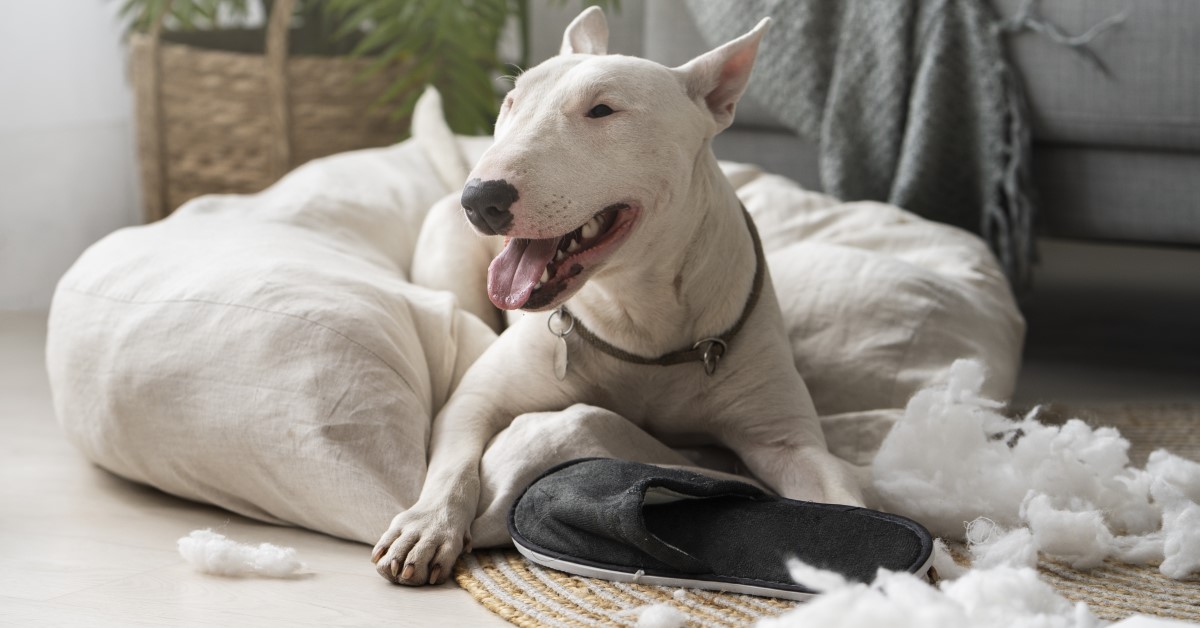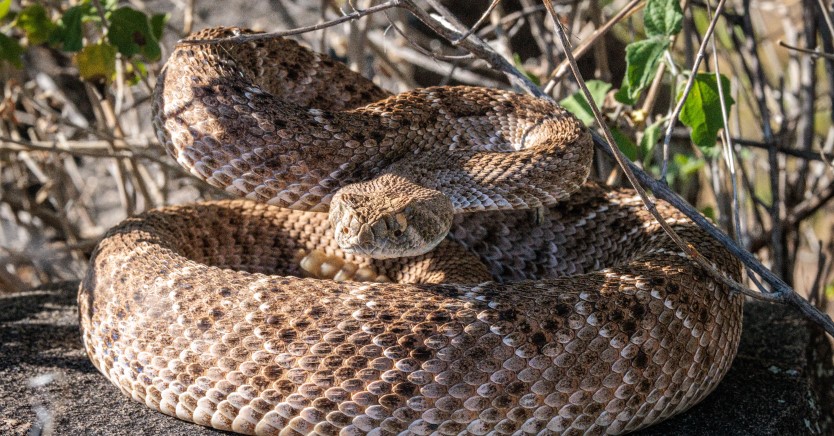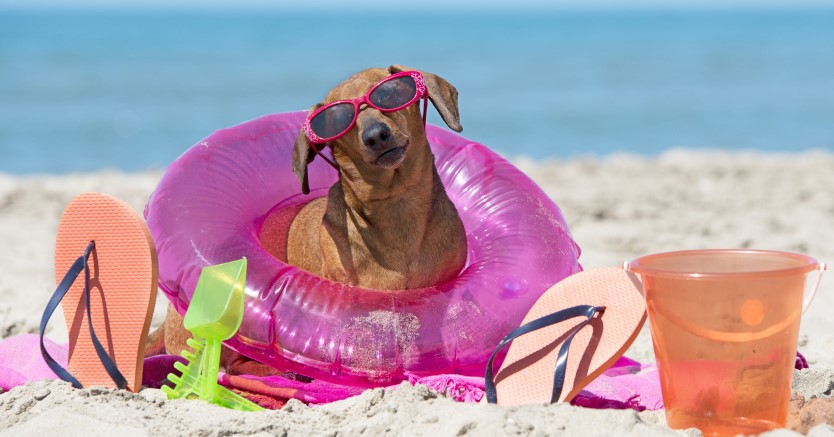My Dog Swallowed Stuffing from His Toy: Is It Dangerous?
Stuffing from dog toys cannot be digested and may cause your dog harm.

Modern dog toys are made to be fairly resilient, but when introduced to a rambunctious pup or heavy chewer, fluff can fly. If your dog manages to remove the toy’s stitches, he may access and even eat the soft filling inside. Depending on the size of your pet, a small sample will not usually cause any harm. However, ingesting a larger amount of stuffing could lead to unexpected medical ailments. Let’s discuss whether it’s dangerous if a dog swallows stuffing from a toy, and what to do if you encounter a similar problem.
What Happens If Your Dog Swallows Stuffing?
If your pup recently ate stuffing from his toy, you may be worried about his well-being. However, eating a bit of stuffing isn’t usually a cause for alarm. Most dogs will pass a small amount of the cotton material naturally and you’re likely to discover it in their stool within 10 to 24 hours.
However, small pups or dogs who eat larger amounts of stuffing may encounter difficulty passing the fluff. For example, a large mastiff may pass a handful of fluff without incident, while a small chihuahua who ate the same amount could experience a blockage in his digestive tract that requires surgery to remove.
What are the Signs of a Blockage?
Dogs that consume stuffing should be carefully monitored to ensure that the foreign body passes without incident. Be on the lookout for possible signs that something is amiss, such as:
- Loss of appetite
- Diarrhea
- Vomiting
- Abdominal pain or tenderness
- Resting in a downward dog position
- No stool produced
- Blood in the stool
- Excessive drooling
If you notice any of these signs within a day of your pet eating fluff from a toy, contact your vet for guidance. Your vet may recommend an X-ray of the abdomen to determine if there are any obstructions in the digestive tract.
How are Foreign Body Ingestions Treated?
Depending on your pet’s age, size, and symptoms, your vet’s approach to treatment may differ. If your dog recently ate the fluff, your vet may attempt to induce vomiting to get rid of the fluff before it has the chance to move further along the digestive tract. Hydrogen peroxide is commonly used to induce vomiting, although alternative options are available.
Once the fluff has lodged in the intestines, more invasive treatment may be needed to remove the obstruction. Many vet hospitals now offer endoscopy services, which is a less invasive way to diagnose and remove foreign bodies from the stomach.
However, if the blockage has been there for an extended period of time, the fluff may need to be surgically removed. To help your dog recover, your vet may recommend fluid therapy, antibiotics, anti-nausea medications, and pain relievers.
How Can I Prevent My Dog from Eating Fluff?
Finding out that your dog has ingested fluff can be scary, and you likely won’t want it to happen again. Fortunately, there are things you can do to avoid this situation in the future.
Start by selecting only dog-approved treats and toys. This means toys and stuffed animals that are made exclusively for dogs, rather than human children. Choose a toy size that is appropriate for your dog’s size to avoid a choking hazard.
Next, pay attention to your dog’s chewing habits. Some dogs enjoy gentle nibbling or suckling while keeping the stuffed toy fully intact. Others can be more aggressive chewers and will quickly remove the stuffing from a toy, as well as other internal components like squeakers. Always supervise your pet while they’re chewing and take the toy away if any stuffing is exposed.
If your dog continually pulls stuffing from toys, consider an alternative that is less likely to be dangerous to your pet’s health. Some stuffed dog toy alternatives include:
- Puzzle toys – Puzzle toys provide your dog with a mental and physical challenge that can range from easy to more difficult. Start with easier puzzles and progressively make them more challenging.
- Teething toys – If you have a young pup, he may be chewing due to the uncomfortable teething process. Choose dog toys that will help relieve his sore gums and teething pain.
- Lick mats – Providing your pet with a lick pad can help curb boredom and give your pet an activity to focus on that’s not destructive. It also doubles as a way to help your pet slow down when eating.
- Treat-dispensing balls – If your pet is food-motivated, having a ball that dispenses treats on its own can be a great alternative to stuffed toys. There are also other treat-dispensing toys on the market, such as Kongs.
To prevent your dog from eating fluff, you’ll also want to ensure that he knows basic commands. Work on important commands, such as “leave it,” to allow you to remove potentially dangerous toy components when necessary. Also, put stuffed toys in a safe, inaccessible place when you’re not home to prevent your dog from ingesting fluff when you’re not around to supervise.
When to Contact a Vet After a Dog Eats Fluff
If you discover that your dog has eaten fluff from a toy, don’t panic. Contact your vet to determine if the situation requires professional intervention. Promptly addressing the issue can help ensure that your pet recovers quickly and without long-term effects.
Ready to start saving money on pet wellness care?
Then take a look at Mint Wellness, the pet wellness plan that provides fast reimbursement on routine pet care. Save on vaccinations, wellness exams, preventatives, dental, and more!
Learn More


